[ Thank you to John Acosta for this wonderful retelling of his 2016 experience of paddling the Rivers for Change California 100. An opportunity to see snow capped mountains as you head down river through oak forests, open plains, and lava flows. And mix in some class 1 & 2 rapids to speed you down as well. We have always wanted to know more bout what it took to accomplish this feat and what it was like. ~CP ]

Paddling 100 miles at the Cal 100 by John Acosta
Last week, it was announced that registration was now open for the 2017 Cal 100 paddle. Therefore, I figured it was probably about time for me to write about my experience there during the 2016 event and hopefully help others prepare for their trip down the river.
As of this writing, I've been doing SUP for just about 14 months now and I signed up for the 2016 Cal 100 in December of 2015; meaning I had only 4 months of experience when I was the first person to register on PaddleGuru for the "race". For some crazy reason, the idea of paddling for the better half of an entire day seemed like fun. I fully realize the event is not necessarily an actual race and I will go back and forth from calling it an "event" or a "race", but with that being said, I was absolutely there to race......the clock.
I made it my personal goal to finish in less than 14 hours, which would mean that I would complete the event before the expected sunset of around 8:00pm. This would make a significant difference in any "issues" as I would not have to paddle in the darkness. There are numerous rocks, logs, stumps, roots, etc., along the river and I didn't want to be worrying about spotting them at night with a small headlamp after balancing & paddling for the last 14 hours. The event website warns of bugs & bats flying into your lights and I wanted to deal with NONE of that.
If you're not already familiar with the event, it takes place every year around June and travels from the Sundial Bridge in Redding, CA all the way to Chico, CA via the Sacramento River. It's only about 50 miles via the Interstate 5, but the twists & turns of the river double the distance to 100 miles. I believe last year was the first time you could choose either 25, 50 or 100 mile distances and they are continuing that option this year as well. You can also choose to do a Relay Team or Solo.
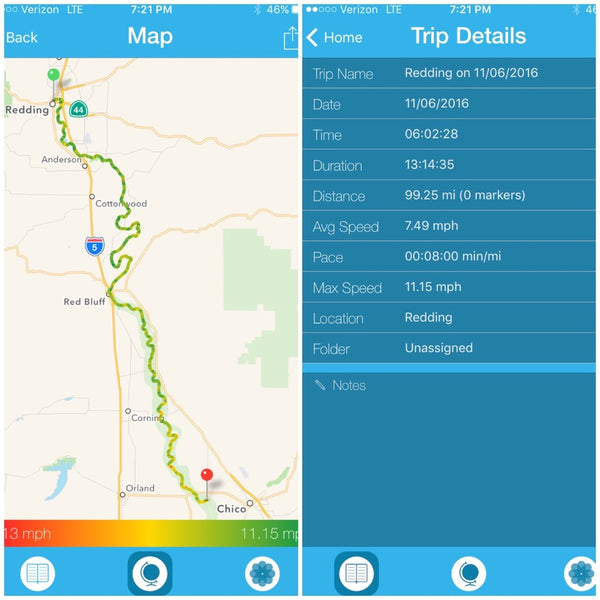
In my preparation, I had talked to both Maggie Adams & Helen Jenkins; a couple of local SUP'ers down here in San Diego that had previously done this event and picked their brains as much as I could. Their insight gave me a better idea of what to expect and what I was getting myself into. Rumor had it that the water flow was going to be good for 2016, so that was going to make my life a little easier. However, regardless of what the flow is, you'll still be standing on a paddle board for 12-18 hours depending on your skill......and luck, so it's no easy task no matter what.
My training was pretty straight forward. Four days a week on the water, with three of those days being 2-3 hour paddles and one day of 4-6 hours. It is imperative that you properly prepare for the race with the equipment (and foods) that you will be using on race day. This event requires SUP's to wear a non-inflatable PFD, so you need to get used to paddling with a vest style PFD on and find one that is comfortable enough to wear for 12+ hours that won't rub you raw in your armpits, etc. Also of great consideration is how this will effect your hydration system while wearing a vest PFD and what modifications you may need to make. You will also need to determine what footwear (if any) you will want to wear and how that changes your balance & sensitivity on the board. Finally, consider gloves and/or taping your hands & fingers as you will make approximately 40,000 - 50,000 strokes during this race. There is many things to think about and I suggest taking the time to properly inventory your personal tastes regarding your equipment and how it will all play out on race day.
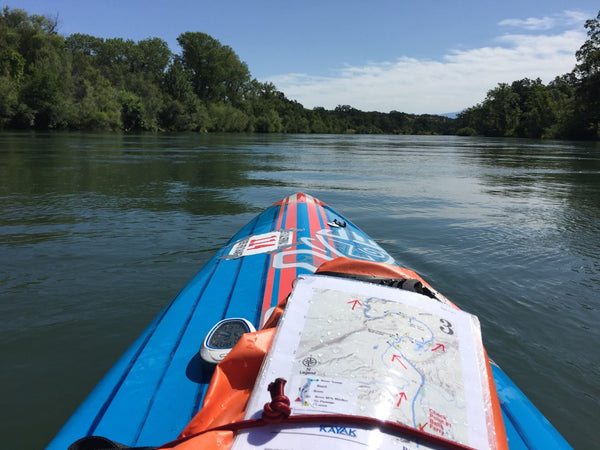
I calculated out my expected calorie burn for the event and came up with about 9,000 calories. That's assuming I burned 600 calories per hour and it takes me 15 hours to complete. For an ultra endurance event like this, it's ideal to consume no more than about 300 calories per hour, which was only about 50% of what I would be burning. However, attempting to consume more than that could result in an upset stomach, nausea, vomiting, etc., as the body just can't process much more than that per hour. Based on these numbers, I prepared my checkpoint bags that my lovely Wife would be giving to me at each of the three mandatory stops during the paddle. They are roughly 25-30 miles apart and you MUST stop and check in with race officials to confirm you are okay to continue. It is also your chance to refuel, apply more sunblock, change clothing, etc.
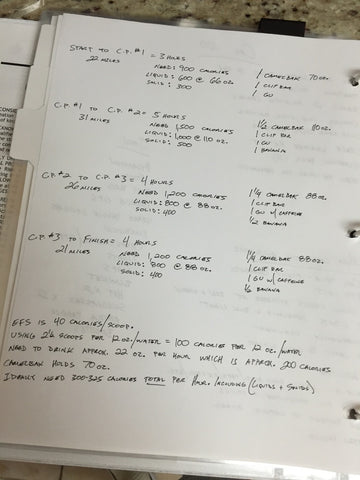
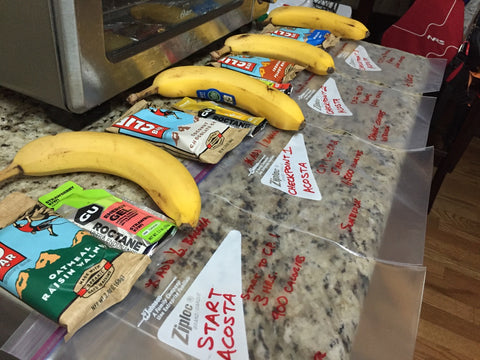
Temps for 2016 were expected to be around 60F at the 6:00AM start and climbing into the 90's by mid-day. Meanwhile, the water would be a brisk 55F. My CamelBak was filled with a high calorie liquid mix that I would sip on every 15 minutes and the rest of my calories came from ClifBars, GU's and Bananas. I selected GU's with caffeine for the later checkpoints to avoid getting jittery early in the day.
My equipment was a 2016 Starboard Allstar 14X25 and I opted to use a QuickBlade V-Drive 91 for the first half of the race where the current was much stronger and gave me the extra help, then switching later to my Trifecta 86 once the current was weaker and I needed the easier catch of the smaller & more forgiving blade. You'll also need to get a "quick-release" leash as well, as a standard leash is not allowed. In fact, they recommend no leash at all, but I didn't want to risk getting separated from my board and be swimming in such chilly water.
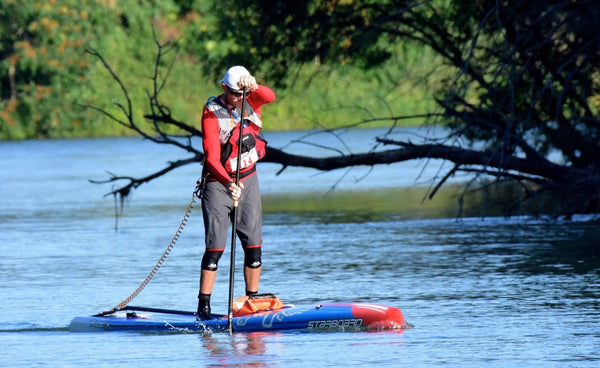
Race day: You'll need to wake up extra early to allow yourself time to properly digest a good sized breakfast before the 6:00AM start time. Double check all your gear & supplies and stretch out. If you don't have somebody driving to each checkpoint to give you supplies, you will need to give them to the race officials, clearly marked with your name and which stop you want it at, so it will be there waiting for you. About 15 minutes before the start, they had us getting out on the water. We launch in a small boat launch area, just out of the flow of the river. They ask you to go straight across to the other side and face upriver to await the start. I triple checked everything and got on my board. As soon as my 14' board got out in the current, it swept the board right out from under me and I went for a dunk in the cold water. I was no longer sleepy after that! Haha. The river current was much stronger than I expected and with no river experience, I was in for a quick lesson. I got back on my board and headed across stream. The course goes about 100 meters up river before making a 180 degree turn and then heading down river.
The starting horn went off and I was on my way. After the crowded U-turn to head down river, I made a strong effort to catch up to any other SUP's so I could know where I stood in the standings. I fell off maybe 2-3 times in the first mile as currents & eddys would push my board and spin me in either direction. It felt like someone was grabbing my fin and twisting my board around. Kinda like skateboarding on an ice rink! I finally got into my groove and was starting to figure out the currents after a few miles. I could see about 3-4 other SUP's in front of me and slowly started reeling them in. One by one, I caught & passed them trying to be wise to the fact that I still had 92 miles to go....lol.
I soon found myself in 2nd place in the SUP division and settled into a steady effort that I felt comfortable maintaining for the next 10+ hours. However, I realized not only was I not gaining ground on the 1st place SUP, off on the horizon, but I was actually losing distance to him. I would come to find out later that the guy speeding down the river was Robert Stehlik from Blue Planet in Hawaii. He was riding a custom 18' dual hull catamaran and was flying. There was no way I was going to catch him and I would exhaust myself trying to do so.
The first stage of the race has the strongest current with the most rapids as well. As the race goes on, it seems both the push of the current and the rapids gradually weaken and or disappear. My GPS indicated high speeds of almost 12 mph during the first half of the race, while in the later half I typically saw speeds of 5-7 mph. We went through some "rapids" sections, which I believe were classified as a Class II rapid. Nothing much to an experienced river paddler, which I am not. I quickly learned it was better & more efficient to drop to my knees for a few seconds and get through the rough sections, instead of trying to be a hero and stand up through it. Falling off meant cold water & possible injury from the sharp rocks below. The thin knee pads I was wearing saved my knees from getting too chewed up from the board.

After 22 miles, I arrived at Checkpoint 1 in 2 hours, 42 minutes. I made a focused effort to spend no more than a few minutes at each checkpoint. Others would sit down, relax & joke around and that's either because they weren't in a hurry and not there to race or maybe they were on a OC1 or SurfSki or Kayak, etc....so they weren't going to have to worry too much about finishing before dark. But I was racing the clock and on one of the slowest watercraft, so I knew I needed to keep moving. My Wife had all my stuff there ready to go at each checkpoint. Refill the CamelBak, grab my pre-assembled goodie bag, apply Sunblock and go was the agenda. After another 31 miles, Checkpoint 2 appeared after 4 additional hours of paddling. This was the longest stretch of the race. At this point, I changed paddles to the smaller blade anticipating the weakening current and my weakening muscles….lol.

Somewhere between checkpoint 1-2 is where I had sustained most of my board damage by hitting some rocks that were slightly submerged. It's hard to avoid obstacles in a river unless you really plan ahead, as the object will approach you much more quickly than you're used to if you don't usually paddle in rivers. I avoided most of the serious stuff, but other obstacles either caught me by surprise and/or I never saw them.
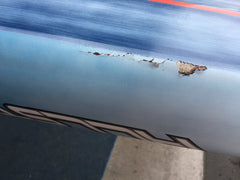
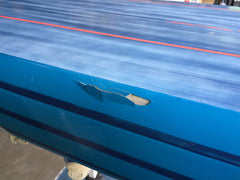
Checkpoint 2 to 3 was 26 miles and it took me 3.5 hours to get there. Upon arriving there, I was starting to feel the effects of spending the last 10 hours standing on a paddle board. I spent a couple extra minutes stretching before leaving the checkpoint for the last stretch. Before leaving Checkpoint 3, the race officials will confirm you have the required lights on board before you depart. Thankfully, I was on track to arrive at the finish before sunset as I now had “only” 21 miles remaining and 4 hours to do it. The last stretch of distance definitely has a slower current and it gave me some time to look around & enjoy the scenery a bit more since I wasn't so concerned about slamming into rocks & logs at 12 mph.
Upon reaching the finish at 7:15 PM, I knew I had accomplished my goal of finishing in well under 15 hours. My final time was 13 hours and 16 minutes. The fastest 14' board time of the day and second to Robert on his 18'er. Seeing my Wife waiting for me at the finish and hearing the cheers of the small group there brought all the emotions out. The training, the sacrifices and the effort I had just put out had me all choked up.
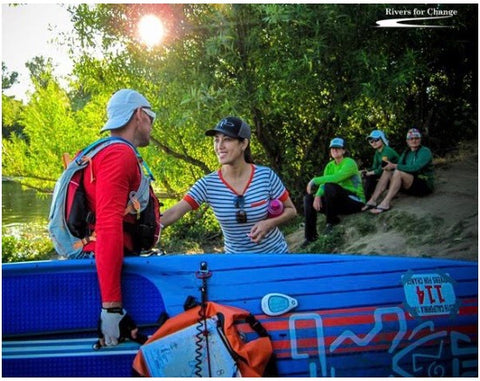
The question I was asked most in the weeks after the race was; "Would you do it again?" My answer has always been the same..."probably not". That’s not because of the difficulty of the challenge or the distance, or because it wasn't an amazing and scenic experience. But simply just because I would rather explore another similar event. Additionally, I purposefully went as hard as I could so that I had no feelings of regret about how I could have gone faster if given another chance. Robert from Blue Planet said it best in his article about his experience at the race....... "John Acosta came in about 20 minutes later and looked exhausted, like he had left everything on the river".
That's because I did.

Check out more about this great race and the non-profit Rivers for Change.
 Team Writer John Acosta - John Acosta got into paddling just over one year ago after two rough bicycling accidents. He decided that falling in the water was much less painful than road rash. John spent the last 20+ years involved in cycling & Jiu Jitsu and once he found paddling, he was hooked. Over the last 14 months, he has fully embraced the sport of SUP and just recently started working in the OC6 as well. Working closely with other local (not to mention fast & very talented) paddlers Chase Kosterlitz, Zibi Wadzynski and Red Pedrick, John has dedicated himself 100% to the sport to improve as much as possible in a short amount of time. What is his favorite part of the sport? "The humility of even the fastest guys...Seeing Noa Hopper out on the water in San Diego or approaching Connor Baxter at the Pacific Paddle Games...everybody is just so cool and down to earth."
Team Writer John Acosta - John Acosta got into paddling just over one year ago after two rough bicycling accidents. He decided that falling in the water was much less painful than road rash. John spent the last 20+ years involved in cycling & Jiu Jitsu and once he found paddling, he was hooked. Over the last 14 months, he has fully embraced the sport of SUP and just recently started working in the OC6 as well. Working closely with other local (not to mention fast & very talented) paddlers Chase Kosterlitz, Zibi Wadzynski and Red Pedrick, John has dedicated himself 100% to the sport to improve as much as possible in a short amount of time. What is his favorite part of the sport? "The humility of even the fastest guys...Seeing Noa Hopper out on the water in San Diego or approaching Connor Baxter at the Pacific Paddle Games...everybody is just so cool and down to earth."
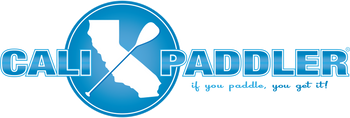

















Alexandre Rezende - March 05, 2020
Thank you for all the information. Congrats!
I will be there this year. One question what kind of PDF life vest did you use?
Cheers
Paul - December 15, 2016
Awesome story John! Way to share the ordeal, challenge, triumph and emotion.